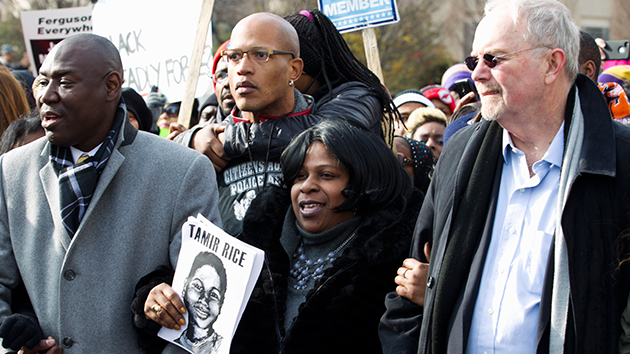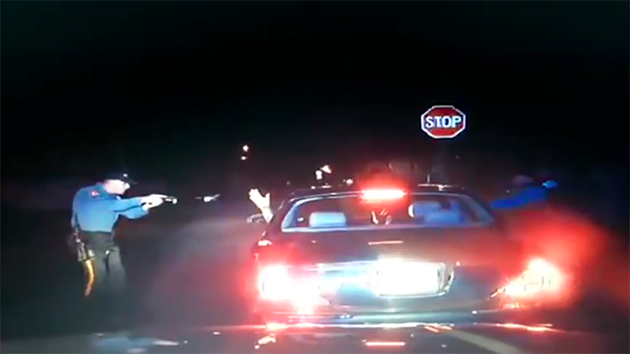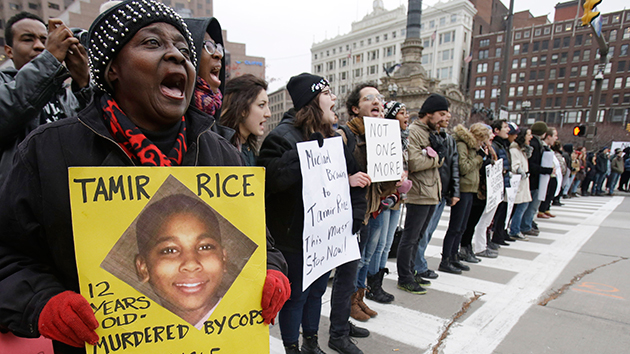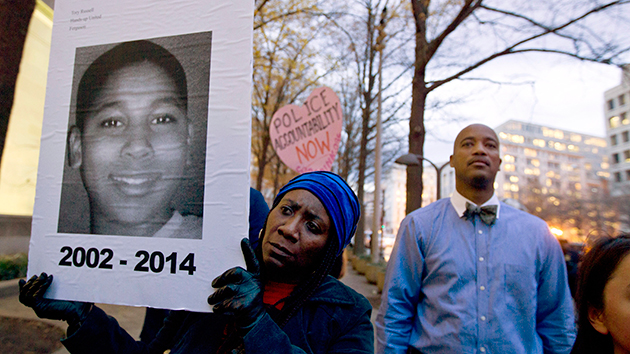
Samaria Rice center, the mother of Tamir Rice, and others, march during a protest in Washington, DC, Dec. 13, 2014.Jose Luis Magana/AP
The long-awaited findings of a probe into the death of 12-year-old Tamir Rice, who was shot and killed by a police officer in a Cleveland park last November, were finally released Saturday afternoon by the Cuyahoga County Prosecutor’s Office.
The publication of hundreds of pages of documents marks a significant milestone in the long and complicated search for answers surrounding the boy’s death. County Sheriff Clifford Pinkney’s office took over the investigation from the Cleveland police department in January. Then, five months later, the sheriff’s office handed over its findings to county prosecutor, Timothy J. McGinty, who has led the efforts since, and released today’s findings. Next, McGinty’s office will decide what additional investigation might be required, after which prosecutors will present evidence to a grand jury to determine whether criminal charges are warranted.
“The death of a citizen resulting from the use of deadly force by the police is different from all other cases and deserves a high level of public scrutiny,” McGinty said in a statement accompanying the trove of documents.
Here are some of the major findings contained in today’s report. We’re making our way through the report now and will update this list:
- Sheriff’s investigators interviewed 27 people, including the officers who arrived after the shooting, the 911 caller, paramedics, friends of Rice, and workers at at the Cudell Recreation Center, which is near the site of Rice’s death.
- Officers Timothy Loehmann, who fired the fatal shots, and Frank Garmback, who drove the squad car, have yet to speak to investigators, despite multiple attempts to interview Loehmann and Garmback since the Cleveland police department handed over the case in January.
- Rice’s mother, Samaria Rice, also declined to speak with investigators.
- The 911 dispatcher who relayed the message to Loehmann and Garmback “refused to answer questions (per her attorney) about not relaying specific information related to the 911 call.” A county official familiar with the case confirmed to Mother Jones that the dispatcher did not answer questions as to why she failed to mention that Rice was possibly a “juvenile” and that his weapon was probably “fake.”
- According to witness interviews, it remains unclear whether Loehmann shouted commands at Rice from inside the police car before firing his gun. A weapons inspection showed that Loehmann fired two shots at the boy within one to two seconds of exiting the vehicle.
- One witness, who said she was about 315 feet from the scene, said she was getting into a car when she heard, “Pop pop…Freeze let me see your hands…Pop.”
Saturday’s release comes days after community leaders in Cleveland filed affidavits asking a municipal judge to seek charges against the officers involved. The judge responded on Thursday saying he believed there was probable cause to bring charges including murder and involuntary manslaughter.
Since Rice’s death on November 22, 2014, questions have mounted about why it has taken so long to investigate the incident. As Ayesha Bell Hardaway, a former Cuyahoga County assistant prosecutor, told Mother Jones, “Half a year is an extremely long time,” especially given the video of the shooting, the details of the 911 calls, and “the questions raised about Officer Loehmann’s fitness for duty.”
Read the full report here:












